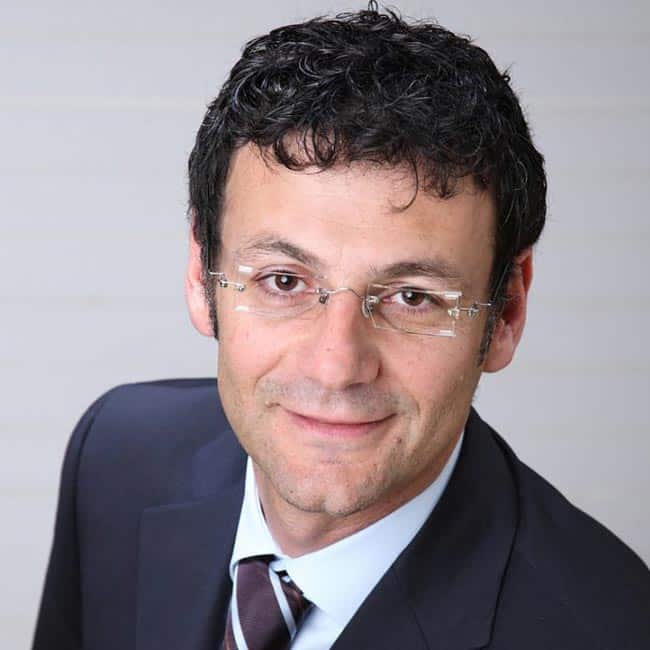In this interview, Ulrich Seibold, Vice President HPE GreenLake Cloud Services DACH, explains the offer and how SAP customers can benefit from it.
E-3: HPE advertises GreenLake as “the better cloud”. In just a few words, what makes the cloud better?
Ulrich Seibold, HPE: Simplicity, speed, and flexibility – while still retaining full control and freedom of choice. With GreenLake, customers aren’t bound to a specific cloud stack. They can decide for themselves where their cloud solutions run – whether that be in their own data centers, at any other location, or in a colocation data center.
The name GreenLake is reminiscent of data lake. Was this a conscious decision? What does HPE allude to here?
Seibold: GreenLake indeed has a strong connection to the topic of data value. The vast majority of data originate at decentralized locations, for example in factories, smart cars, or hospitals. It is not efficient, and it can be a problem in terms of data sovereignty to transfer all these data to a central platform. With GreenLake, we’re going the opposite way: We’re bringing the cloud to the data, not the data to the cloud.
SAP has tried something similar once before with its Data Hub and failed. What does HPE do better?
Seibold: We create consistent data access without centralizing the data. Put simply: With our technology, customers can create data spaces spanning numerous data centers, sensors, machines, and plants. Data remain where they have originally been created, but users still have access to all of them. Consequently, data can be correlated, analyzed, and used to train artificial intelligence models.
According to research company Gartner, data lakes are insufficient. Analysts are currently discussing the term data fabric. When will HPE start offering “Green Fabric”?
Seibold: We’ve been offering the technology for three years already. Since last year, data fabric has become an integral part of HPE GreenLake. We also use the term Data Lakehouse which refers to the newest generation of analytics platforms, combining the efficiency of a data warehouse with the extensive data pool of a data lake.
It has become quite obvious that most CIOs are in favor of cloud computing; they mostly seem to be disagreeing about the best deployment model: (hyperscaler) cloud only, a hybrid model, or cloud functionality in customers’ own data centers. Where does GreenLake fit into all of this?
Seibold: HPE GreenLake firstly stands for cloud in customers’ own data centers or another location of their choosing. If required, HPE assumes full operational responsibility with SLA up to application baseline operation. Secondly, GreenLake is a multi-cloud platform, allowing customers to easily integrate their own platform with external public cloud solutions.
What are the benefits of GreenLake for SAP customers?
Seibold: GreenLake allows SAP customers to move their SAP landscapes to a cloud deployment model and still retain full control. For example, SAP customers can choose where they want to run their SAP applications or to which extent HPE assumes operational responsibility. They are also free to choose if and when they want to migrate to S/4 Hana.
Is GreenLake at odds with RISE with SAP?
Seibold: No – quite the opposite, actually! SAP itself uses HPE GreenLake as foundation of its Customer Data Center option in S/4 Hana cloud.
A survey of the German-speaking SAP user group DSAG highlights that many of its members would prefer an on-prem model for Hana and S/4. Can GreenLake be that compromise between what DSAG members want and what SAP offers with its “Cloud Only” approach?
Seibold: I wouldn’t call it a compromise, but rather a full-featured cloud alternative for customers who prefer the on-premises model.
What are GreenLake’s benefits for CIOs that use non-SAP solutions as well?
Seibold: Centralized, proprietary models are a thing of the past. GreenLake, on the other hand, is a platform for the new era of digitization. It combines seemingly incompatible principles: decentrality, openness, and variety on the one hand; seamless cloud experience and consistent management on the other. In this context, SAP is just one of many applications our platform supports. We have an extensive GreenLake partner ecosystem ranging from infrastructure to applications.
How would you convince a CFO of your platform?
Seibold: We usually do not have to convince CFOs. For them, it is about Opex instead of Capex and lower overall costs. With GreenLake, customers only pay for what they use. We can precisely measure usage and we can charge the costs to the customers’ cost centers if desired. That alone reduces costs dramatically because costs are allocated based on causation. We also offer very interesting financing options with HPE Financial Services, for example sale-and-lease-back of existing IT infrastructure which frees up money for the customer’s digital transformation.


















![hpe greenlake sap [shutterstock_1758457142-Daria-Bogomolova]](https://e3zine.com/wp-content/uploads/2022/03/hpe-greenlake-sap-shutterstock_1758457142.jpg)



Add Comment